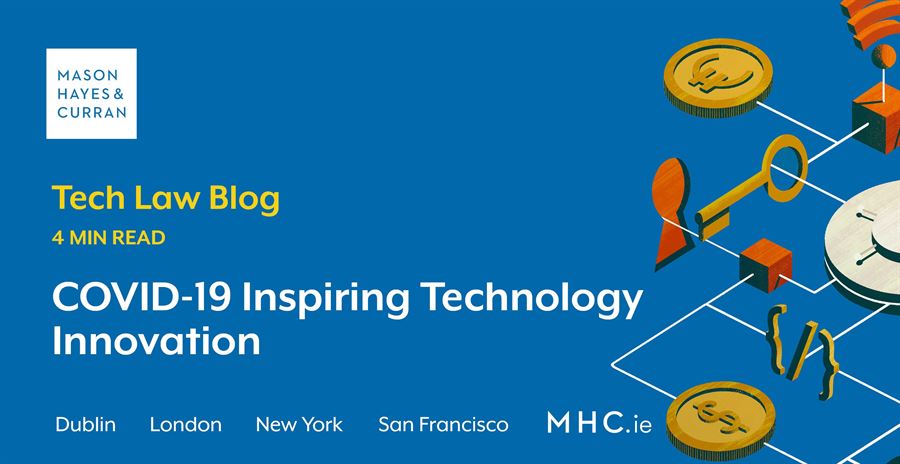
The COVID-19 pandemic is one of the biggest global challenges of the last 50 years. The unprecedented global health crisis has caused significant economic challenges for both businesses and consumers. Technology and science is at the forefront of the medical response to combat the virus.
Outside of the medical sector, the social distancing measures and lockdown restrictions have also accelerated a general market trend of digital innovation and digitalisation in society that many are calling the ‘new normal’. Technology is enabling organisations to function in response to extreme circumstances. A prime example of this is the uptake of personalised collaboration technology, which has empowered employees as remote workers and kept the economy running through virtual workspaces.
With the high street closed, there has also been a huge consumer migration to online marketplaces. Here, channels for digital communication and digital payment have become extremely important and a variety of interwoven technology facilitates customers seamlessly paying for products and services online.
Trusting the technology
Why did 2020 see such a boom in ideas and innovation? In many respects, the external influence of the lockdown restrictions over the last 12 months presented businesses and consumers with a once-in-a-lifetime opportunity to experiment with digital offerings and experiences.
Back in 2019, we often saw a degree of resistance to change from some users who preferred traditional technology offerings and working methods. However, the stringent constraints brought on by the global crisis resulted in users having little choice but to migrate to a broad range of technologies and acquire confidence in them; this trust in the technology was necessary to continue their lives both at work and at home.
Users quickly learned first-hand the advantages of interactive digital solutions, such as efficiency and connectivity. From a business perspective, selling add-on features like shared video messaging, data analytics and interactive communities also offered a way for providers to recoup fees when there may have been a dip in the overall consumer confidence in the economy.
Long-term consequences
The COVID-19 crisis has altered the course of growth for many organisations. This has required bold decisions to be made by both governments and in boardrooms.
The overall effect is undoubtedly a general market shift where businesses are embracing a vision for connected digital services across their organisation and users are more receptive to participating in the digital marketplace.
To capitalise on this, technology suppliers are seizing the opportunity and changing the status quo by offering a variety of personalised cloud based products, apps and digital connectivity services.
Naturally, the uptake of already commercially available digital services to address the current circumstances has been the primary beneficiary to date. However, we also expect more profound innovation and disruption to take hold as the need to make up lost ground becomes important for post-COVID planning.
These factors, coupled with game changers like automation, artificial intelligence and blockchain, are disrupting the old state of play and things are expected to move rapidly from here.
Legal considerations
These technologies offer many benefits, including growth and value creation, and demand is soaring. But they also present important challenges like data protection, cyber-security and third party compliance, which organisations need to keep on top of.
In addition, COVID-19 may be a catalyst for change, but legislative reform in the technology sector is making compliance a moving target. For example, we expect to see a raft of new technology focussed European regulations and guidelines over the next 24 months. As regulatory responsibilities become more complex, organisations need a well-defined legal strategy to help realise their digital ambitions.
For organisations looking to capitalise on the recent rush of innovation, pursuing a digital mindset in 2021 presents strategic challenges and also requires flexibility and structural alignment. To derive optimum value, organisations need to prepare and implement their own digital readiness plan that balances risk and reward.
The future is digital
While it is difficult to predict the long term effects of the current crisis or when it will end, it is clear that society’s reliance on shared technology and innovative digital services is here to stay. Even as we hope to transition back to normal life, the pace of change and digital investment is likely to continue as the economy rebounds over the next 12 months. We may even see technology that was used to battle COVID-19 being repurposed and turning out to be just as useful in everyday life.
Even before the onset of the pandemic, digitisation was leading to an evolving operating environment for businesses and consumers. The fight against COVID-19 has, in many ways, accelerated the adoption of new technology and crystallised the opportunities available for change.
For more information please contact a member of our Technology team.
The content of this article is provided for information purposes only and does not constitute legal or other advice.



